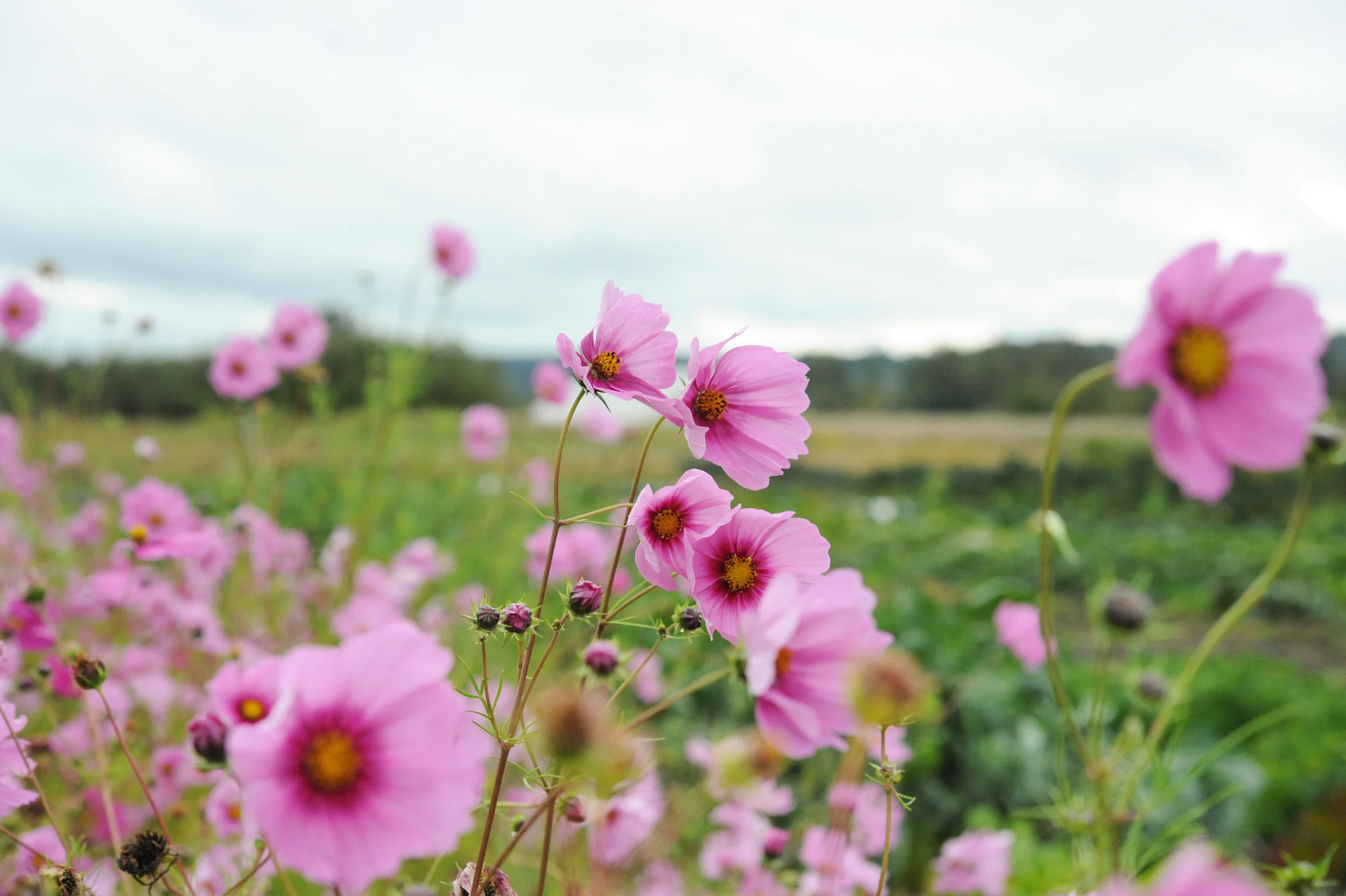Editor's Note: Welcome to our guest bloggers Hilary Dahl, from the podcast Encyclopedia Botanica and Seattle Urban Farm Company, with Kellie Phelan, writing about the benefits and beauty of adding flowers to your annual vegetable garden!
Flowers add both beauty and functionality to your garden. They provide interesting colors, scents, and textures to the landscape and allow you to create beautiful homegrown bouquets all summer long.
But flower power doesn’t stop there! Flowering plants attract pollinators and beneficial insects that help your fruits and vegetables develop robust harvests, and they increase the ecological biodiversity of your neighborhood.
Beneficial flowers can be both annual and perennial species. If you have a smaller garden, or you would like to mix flowers into your vegetable garden beds, we suggest planting annual flowers. This will allow you to easily rotate your crops from year to year.
If you have the luxury of a larger landscape, try planting some perennial varieties surrounding your edible garden or anywhere you can fit them into your planting plan. We always suggest, whatever size your vegetable garden is, to keep the perennials separate from your annual vegetables for ease of maintenance and crop rotation. If you are tight on space in your garden, adding containers of annual or perennial flowers is a great option.
Let’s take a look at some of our favorite and most reliable flowers, organized by annual and perennial types. All of these varieties are available at Swansons!
Annual Flowers
Cosmos
Cosmos
photo: Hilary Dahl
Cosmos produce lots of yellow pollen and their sturdy stems and ferny leaves provide the perfect scaffolding for spiders to build their webs. They also make great cut flowers. The height of cosmos varies from 2-5’ depending on the variety. If you’re short on space, consider a smaller variety.
Varieties we recommend: Double Click, Sensation
Queen Sophia Marigold
photo: Nichols Garden
Marigolds
Marigolds may be best known as a companion plant to tomatoes. They are thought to deter nematodes, microscopic worms that feed on the roots of plants (there are also beneficial species of nematodes). Marigolds also attract pollinators, especially honeybees. And while marigolds may not come to mind as a cut flower, it can be a beautiful addition to a bouquet, especially if cut while still in the bud phase.
Varieties we recommend: Queen Sophia, Crested Cockatoo, Mr. Majestic
Benary's Giant Series Zinnia
photo:Johnny's Seeds
Zinnia
We love zinnias for their solid structure and bold colors. They grow quickly from seed and are commonly called the ‘workhorse’ of garden flowers. Zinnias provide a place for insects to stop and sun themselves, as well as plenty of pollen and nectar to snack on. Watch closely and you just might notice hummingbirds zooming around your zinnia patch!
Varieties we recommend: Benary’s Giant or any of a wide and varied selection of plant starts!
Autumn Beauty Sunflower
photo: Baker's Creek Heirloom Seeds
Sunflower
Sunflowers make people smile, but they also serve as a great landing pad for a variety of insects, including pollinators and beneficial insects like ladybugs and parasitic wasps.
Varieties we recommend: Make sure you’re selecting a variety that produces pollen (there’s been a recent trend where plant breeders are producing varieties that are pollenless). Check out Two Queens, Snacker, Evening Sun, Lemon Queen, and Autumn Beauty (some available as seeds and others as starts).
Nigella
photo: Hilary Dahl
Nigella
Nigella are a low-maintenance flower gardener’s dream. They germinate well when direct-seeded, they bloom for long periods of time, and their delicate fern-like foliage and exotic looking seed pods are just as lovely as the flower. Nigella is also an excellent attractor of bees to your garden.
Varieties we recommend: Delft Blue, Miss Jekyll Blend. Note: If left in the ground long enough for the seed pods to dry out, nigella will reseed itself, so it’s up to you to decide if you want them in the same spot next year.
Perennial Flowers
Echinacea
Echinacea
photo: Hilary Dahl
The bright blossoms of Echinacea are enjoyed by butterflies. After the petals drop, the cones of seeds that remain attract songbirds and provide important winter habitat.
Varieties we recommend: Any type! (Echinacea spp)
Jacob Kline Bee Balm
photo: Hugh Conlon
Bee Balm
You guessed it! This plant is named after its attractiveness to bees. It is a colorful perennial and it also attracts hummingbirds and beneficial insects.
Varieties we recommend: Scarlet Bee Balm ‘Petite Red’ or ‘Jacob Kline’ (Monarda didyma)
Bronze Fennel
photo: David Domoney
Fennel
Long-lasting fennel flowers are attractive to all nectar-feeding beneficial insects, and the feathery green or purple foliage can add a unique texture to your planting plan. Not to mention, the seeds and leaves add an excellent flavor to a variety of dishes! It’s important to note that perennial fennel spreads vigorously, so it’s best to plant it in a spot that is contained.
Varieties we recommend: ‘Bronze’ (Foeniculum vulgare)
Moerheim Beauty Helenium
photo: Pinterest
Helenium
This low maintenance, hardy perennial attracts birds, bees, and butterflies. And it blooms for months!
Varieties we recommend: ‘Moerheim Beauty’ (Helenium autumnale)
Blue Fortune Hyssop
photo: Monrovia
Hyssop
Hyssop is a bushy herbaceous perennial with showy flowers that range from pink to orange to purple and blue. The flowers are rich in nectar and are attractive to both butterflies and pest-eating beneficial insects.
Varieties we recommend: ‘Blue Fortune’ (Agastache foeniculum)
We hope you’ll be inspired to add more flowers to your garden this year! For your weekly dose of seasonally relevant edible gardening advice, tune into the Encyclopedia Botanica podcast.
Find us on iTunes, www.seattleurbanfarmco.com, or subscribe wherever you get your podcasts.











